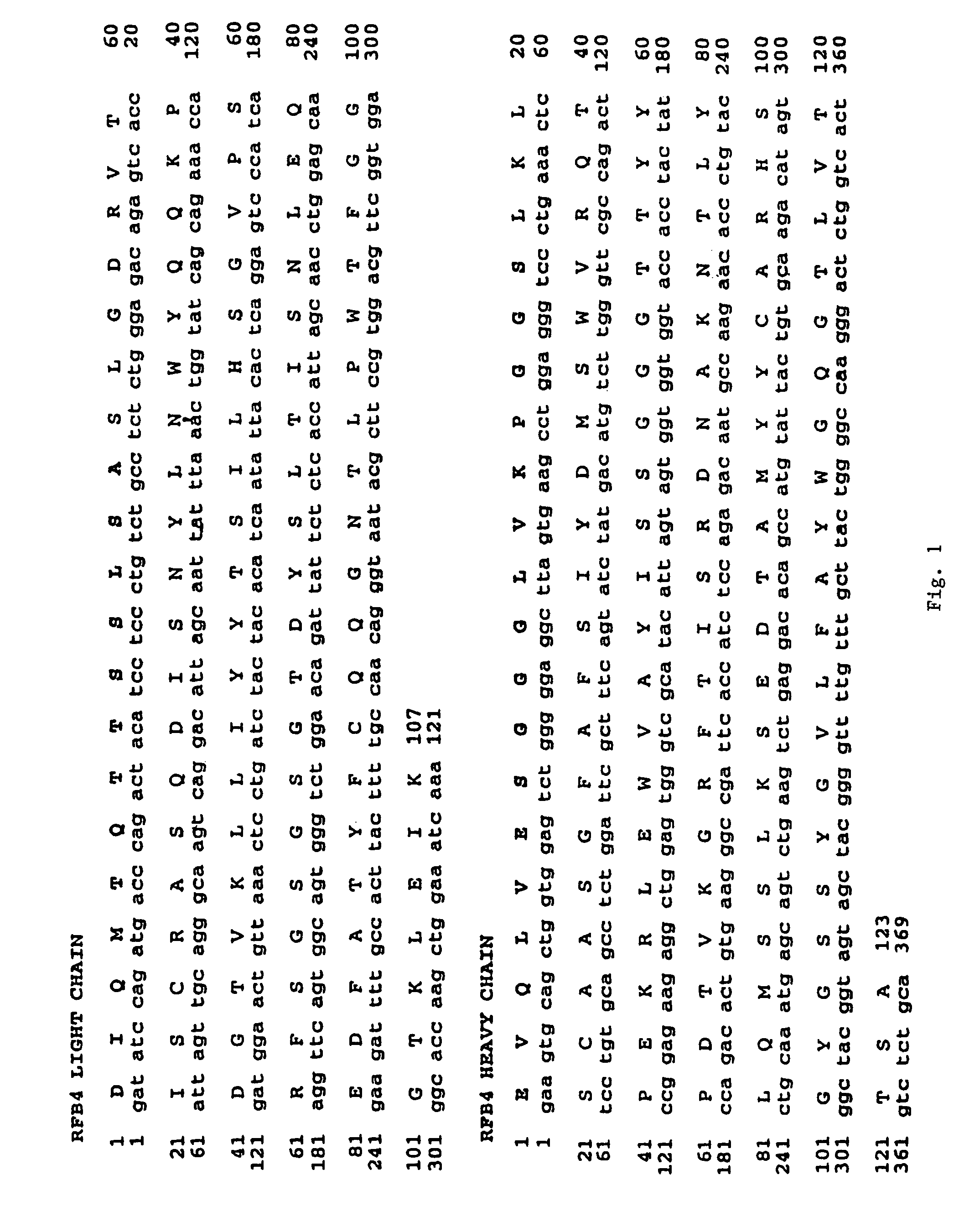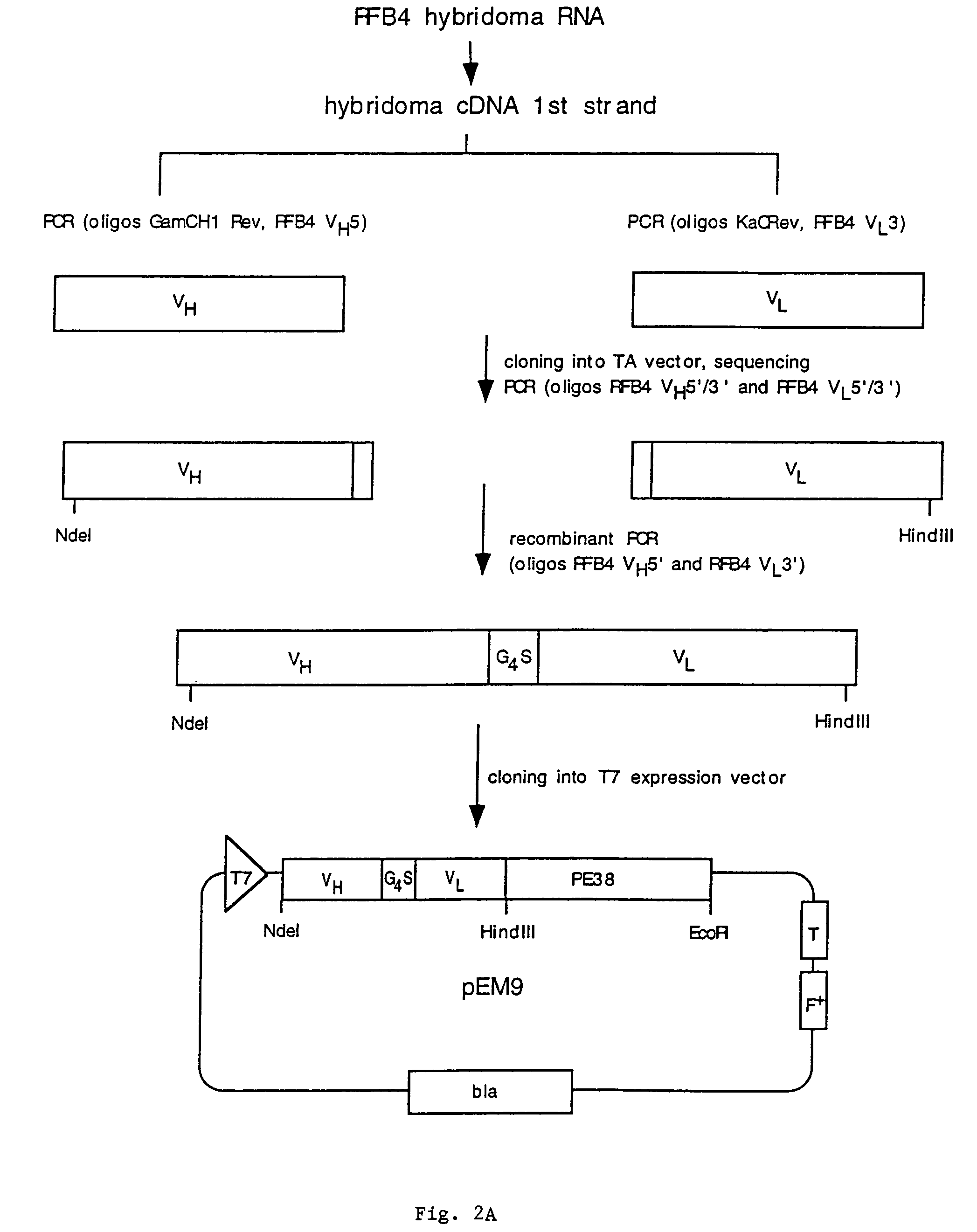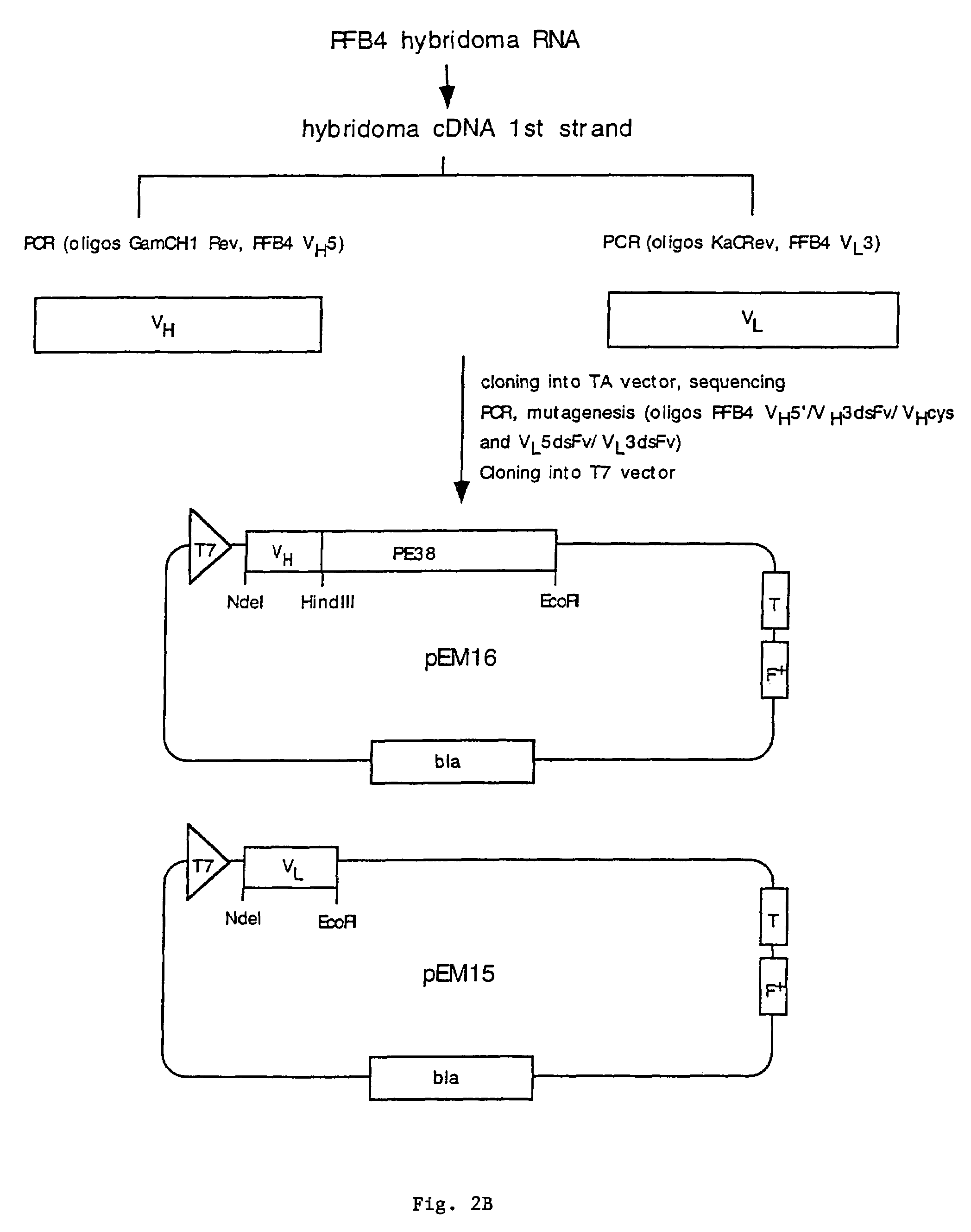Recombinant antibodies and immunoconjugates targeted to CD-22 bearing cells and tumors
a technology of anti-shedding antibodies and immunoconjugates, which is applied in the field of anti-shedding antibodies and anti-anti-anti-tumor conjugates, can solve the problems of inability to manufacture drugs, limitations on the ability to penetrate tumor masses, and inability to detect shed antigens in normal human serum or serum from patients, etc., and achieve the effect of inhibiting growth
- Summary
- Abstract
- Description
- Claims
- Application Information
AI Technical Summary
Benefits of technology
Problems solved by technology
Method used
Image
Examples
example 1
[0147]Example 1 describes the cloning, expression, and purification of recombinant clones expressing RFB4(scFv)PE38, RFB4 VH-PE38, and RFB4 VL.
[0148]Purified RFB4 IgG was reduced with 10 mM DTT and light and heavy chains were separated on 4-20% SDS-PAGE (Novex) and blotted onto a PVDF membrane. Light and heavy chain bands were cut from the membrane and subjected to N-terminal sequence analysis. N-terminal amino acid analysis yielded sequence data for both the light and heavy chains of the RFB4 mAb which is provided in FIG. 1.
[0149]To obtain cDNAs encoding the heavy and light chain variable regions of RFB4, total RNA was prepared from RFB4 hybridoma cells and reverse transcribed to yield first strand cDNA. Subsequently PCR was performed to amplify the heavy and the light chains. Heavy and light chain specific primers were synthesized based on the N-terminal amino acid data and amplification was performed using these primers together with primers from the constant regions CH1 (...
example 2
[0155]Example 2 describes a binding assay to study the relative binding affinities of recombinant immunotoxins.
[0156]Relative binding affinities of recombinant immunotoxins was measured by competition against 125I-labelled RFB4 IgG for binding to CA46 target cells at 4° C. CA46 cells grown to >106 / ml were washed twice in ice cold binding buffer (RPMI, 50 mM BES, pH 6.8, 1% BSA), and plated at 106 cells / 150 μl binding buffer / well in 96-well plates on ice. To the cells was added 0.35 ng 125I-RFB4 (2.5×109 cpm / nmol) in binding buffer, and varying concentrations of RFB4(Fv)PE38 and RFB4(dsFv)PE38. Cells were incubated for 3 hours on ice, washed twice in cold binding buffer, and solubilized in 200 μl 0.5% SDS / TE. Bound 125I-RFB4 was quantitated on a Wallac 1470 Wizard gamma counter. The means of duplicate samples were used for calculations. As shown in FIG. 4, a 50% reduction in binding of 125I-RFB4 IgG to CA46 cells was achieved at 70 nM RFB4(scFv)PE38 and to Daudi at 90 nM RFB4(scFv)PE...
example 3
[0157]Example 3 describes a stability study of RFB4(dsFv)PE38 and RFR4(scFv)PE38 for extended periods at 37° C.
[0158]Stability of PE-based recombinant immunotoxins has been correlated with their activity in vitro. Benhar I. and Pastan I. (1994), Protein Eng. 7, 1509-1515. Accordingly, RFB4(dsFv)PE38 was incubated at 37° C. for 1-7 days and its cytotoxic activity after incubation was compared to that of untreated immunotoxin. RFB4(Fv)PE38 was incubated for 2-24 hours at 37° C. The cytotoxicities of the treated samples were compared to samples which were kept at −80° C. In keeping with the previous finding of high stability of dsFv immunotoxins at 37° C., RFB4(dsFv)PE38 was also very stable over the entire 7 days as judged by maintenance of full cytotoxic activity in a 24 hour assay (FIG. 5). In similar assays, RFB4(Fv)PE38 lost no cytotoxicity after 24 hour incubation at 37° C.
PUM
| Property | Measurement | Unit |
|---|---|---|
| temperature | aaaaa | aaaaa |
| temperature | aaaaa | aaaaa |
| pH | aaaaa | aaaaa |
Abstract
Description
Claims
Application Information
 Login to View More
Login to View More - R&D
- Intellectual Property
- Life Sciences
- Materials
- Tech Scout
- Unparalleled Data Quality
- Higher Quality Content
- 60% Fewer Hallucinations
Browse by: Latest US Patents, China's latest patents, Technical Efficacy Thesaurus, Application Domain, Technology Topic, Popular Technical Reports.
© 2025 PatSnap. All rights reserved.Legal|Privacy policy|Modern Slavery Act Transparency Statement|Sitemap|About US| Contact US: help@patsnap.com



